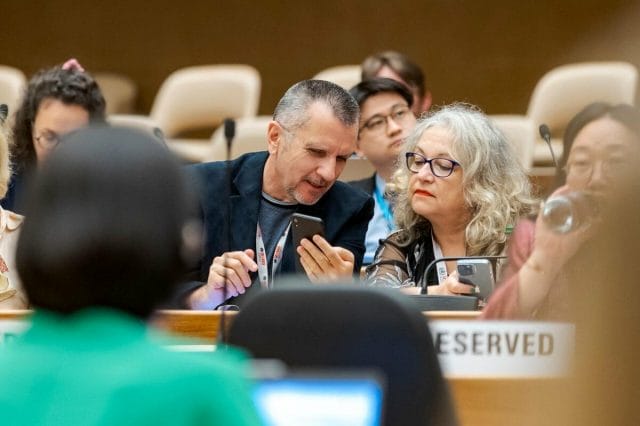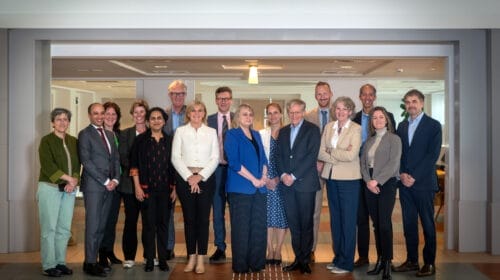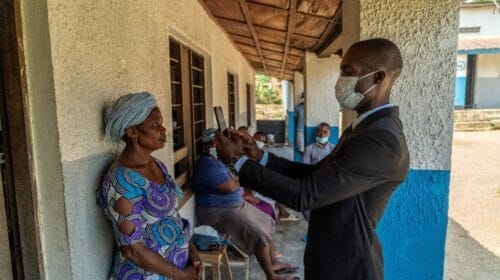Seventy-sixth World Health Assembly – Daily update: 27 May 2023

First global strategy on infection prevention and control
The World Health Assembly agreed today on the first-ever global strategy on infection prevention and control (IPC), which builds on almost two decades of efforts led by WHO and partners. The strategy provides Member States with strategic directions to substantially reduce the ongoing risk of health care-associated infections (HAIs), including those that exhibit antimicrobial resistance.
HAIs are among the most frequent adverse events occurring in the context of health service delivery. The COVID-19 pandemic and recent major disease outbreaks such as Ebola virus disease, the Middle East respiratory syndrome and the Sudan virus disease have clearly exposed the existing gaps in IPC programmes in all countries.
The strategy sets a clear vision: by 2030, everyone accessing or providing health care is safe from associated infections. Its three key objectives are: to prevent infection in health care; act to ensure IPC programmes are in place and implemented; and coordinate IPC activities with other areas and sectors.
The strategy is focused on any setting where health care is delivered, across the health system; it is based on the principle of clean and safe care as a fundamental component of the right to health, which is equity driven, and which should ensure accountability and sustainability.
The global IPC strategy will be complemented by, and used in conjunction with, an associated global action plan and monitoring framework, that will be developed in 2023–2024.
Related document
EB152/9
Draft global strategy on infection prevention and control, Executive summary Report by the Director-General
Related link
WHO’s work on infection prevention and control
Historic resolution paves the way for strengthening rehabilitation in health systems
Today the World Health Assembly agreed a landmark resolution on strengthening rehabilitation in health systems. Rehabilitation services play a key role in ensuring the enjoyment of human rights including the highest attainable standard of physical and mental health. It also promotes sexual and reproductive health, and recognizes the right to work and the right to education.
This landmark resolution aims to address the challenges in rehabilitation such as the need to:
- increase awareness of rehabilitation when setting health priorities and research agendas, allocating resources, promoting cooperation and enabling technology transfer;
- ensure countries are better equipped to respond to the sudden increase in rehabilitation needs including assistive technology due to health emergencies;
- ensure persons in marginalized and vulnerable situations have access to affordable, quality and appropriate rehabilitation services including assistive technology;
- avoid high out-of-pocket costs for people to access rehabilitation services and assistive technology that can cause financial hardships; and
- address the current insufficient level of rehabilitation workforce to serve the needs of the population.
The resolution lists a range of actions to be taken by the WHO Secretariat such as: publishing a baseline report by the end of 2026 with information on the capacity of Member States to respond to rehabilitation needs; developing targets and indicators for effective coverage of rehabilitation services by 2030; ensuring appropriate resources are allocated at WHO to support Member States in implementing technical guidance and resources; and supporting Member States to integrate rehabilitation and assistive technology in their emergency preparedness and response plan.
The WHO Secretariat will report on progress in the implementation of this resolution to the Health Assembly in 2026, 2028 and 2030.
Related document
EB152/10
Strengthening rehabilitation in health systems
Related link
The items above were discussed as part of the document A76/7 Rev.1 – Consolidated report by the Director-General.
Resolution on strengthening diagnostics capacity
On 26 May Member States endorsed a resolution to strengthen diagnostics capacity in countres and to improve access to diagnostic services.
The broad ranging resolution recognizes that diagnostic services are vital for the prevention, surveillance, diagnosis, case management, monitoring and treatment of communicable, noncommunicable, neglected tropical and rare diseases, injuries, and disabilities. Diagnostics allow for the precise identification of diseases, and therefore the timely initiation of the correct treatments for better health outcomes.
The resolution considers the full spectrum of “diagnostics”, thus including both “in vitro” laboratory tests e.g. rapid diagnostic tests and polymerase chain reaction (PCR) and “non in vitro” diagnostics e.g. imaging or blood pressure measurement devices. It covers actions for research and development, manufacturing (including local production and technology transfer), regulation, selection and procurement, awareness, advocacy and addressing access barriers in general.
The implementation of the resolution will build and expand on previous and current work at three levels of WHO to help countries improve access to diagnostic services. The Secretariat is requested to report on implementation progress in 2025.
Related document
EB152/6
Strengthening diagnostics capacity




